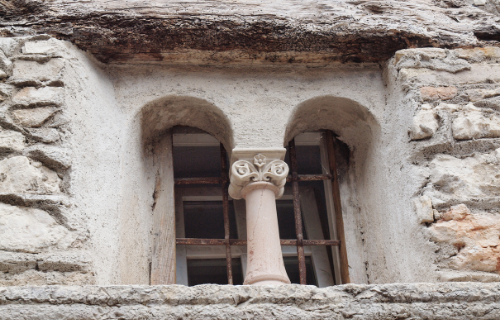Difference Between Muntin and Mullion
Muntin and mullion are the two most commonly used architectural terms that are often confused by many homeowners. If you’ve had your house built recently, then it is possible that your windows have both muntins and mullions on them, whether it’s in real or replicated form. As a homeowner, it is important to understand the difference between the two, especially if you’re doing a design overhaul. These are two most important elements in windows and door systems, but they are not the same.

What is Muntin?
Muntins are those small strips of wood or metal that holds the glass and divide up the window into lights. These are the supporting bars between adjacent panes of glass. Also goes by muntin bars, glazing bars (in UK), or sash bars, these are thin grilles that divide panes into smaller segments. Muntins are commonly used in Western style architecture, typically in doors and windows. They provide a useful means of dating a building as well as helping to define the aesthetics of the window and the room.
Historically, glass was only used in small panes and a window frame joined several panes to form the desired opening. As glass technology evolved, the size of the grid in windows increased, ultimately only being restricted by the operable weight of the sash. Muntins are the preferred choice among builders these days because large glass pieces are prone to breaking while transporting and they can be a bit tricky to install too. Muntins are primarily used for decoration purposes rather than as structural support.

What is Mullion?
Mullion is a slender vertical dividing bar that creates a division between units of a window or a screen. These are integral parts of the frame or removable, depending on the application. They can be vertical or horizontal pieces that provide support to the glazing of a window, but can also provide structural support to a window arch. It serves multiple purposes and found mainly on Gothic and Western architecture, such as Gothic cathedrals, churches, and stained glass windows.
Mullions are also used as a vertical framing member between doors. These are often removable, which allow you to bring objects in through the doorway. When not in use, you can lock them up like a regular cylinder and key. The existence of mullions dates back to pre-10th century. As the use of glass in windows became widespread, so did the use of mullions, as they are technically easier to manufacture and less expensive. These elements add depth to resist wind load, making them susceptible to extreme climatic conditions.
Difference between Muntin and Mullion
Architecture
– Muntin and Mullion are two commonly used architectural terms and are often confused with each other. Muntins are narrow strips of wood or metal that support adjacent panes of glass within a sash. These are thin grilles that divide panes of glass into smaller segments. Mullions, on the other hand, are heavy vertical or horizontal dividing bars that adjoin two windows or doors together. Technically, mullions serve as a frame for the window or door.
Purpose
– Muntins are small wood members that hold the glass and divide up the window into lights. They are used to divide a single window sash into a grid system of small glass panes, called lights or lites. Mullions serve as frames to create divisions between units of a window or door. Let’s say you have a room with a nice view, and you place three double-hung sash windows side by side to make one big window. You’ll have to add supporting posts between the windows to hold them together.
Muntin vs. Mullion: Comparison Chart

Summary
Although, the terms muntins and mullions are often confused with each other, telling the difference between the two is not very difficult. There are identifiable differences between the two. Muntins are mostly used in windows, whereas mullions can be used in both windows and doors. Muntins are thin grilles that divide glass panes into smaller segments whereas mullions are vertical or horizontal frames that separate two window or door units. Muntins are secondary framing elements that hold multiple panes of glass in a window sash. Today, muntins are used as vertical dividers for replacement windows, doors, or wood panels.
What is a Muntin on a window?
Muntin is like a secondary framing member that holds multiple panes of glass in a window sash. Today, muntins are mostly a decorative feature.
What’s the difference between a million and a Muntin?
Muntin is a small wood member that holds the glass and divides up the window into lights whereas mullion is a slender vertical dividing bar that creates a division between units of a window or a door.
What are mullion bars?
Mullion bars are single vertical bars that separate two sides of a single window. These are often confused with transoms, which lie horizontally.
What is a wood mullion?
Mullions can be of any material, but wood is among the most preferred material used to separate two panes of window glass.
- Difference Between Caucus and Primary - June 18, 2024
- Difference Between PPO and POS - May 30, 2024
- Difference Between RFID and NFC - May 28, 2024
Search DifferenceBetween.net :
Leave a Response
References :
[0]Garvin, James L. A Building History of Northern New England. New Hampshire, United States: University Press of New England, 2002. Print
